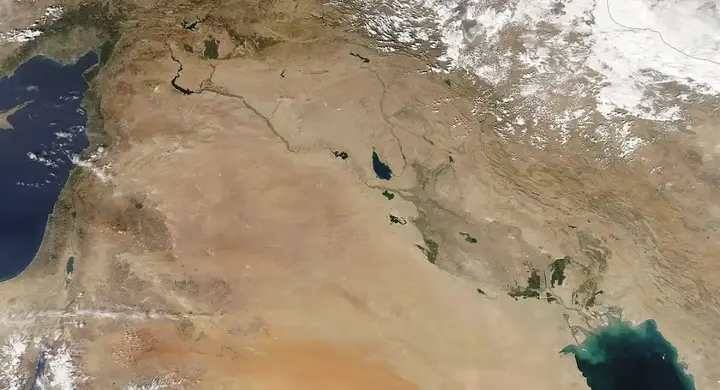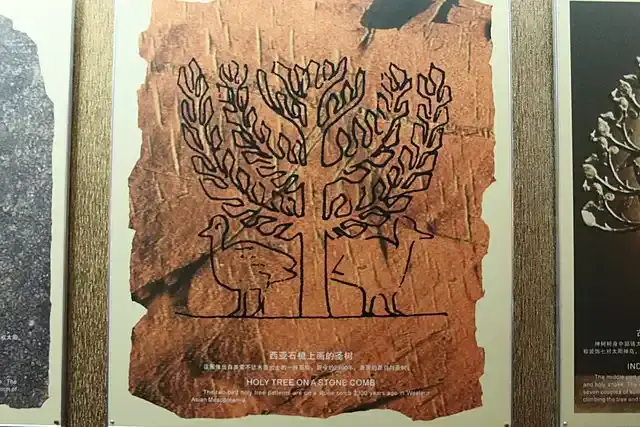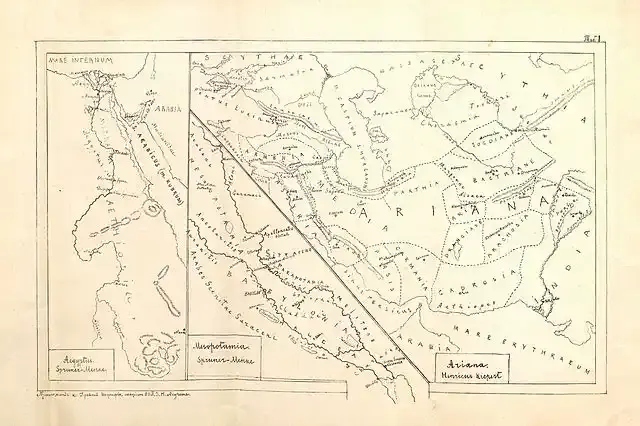Ancient Mesopotamia: the cradle of human civilization
In the cradle of civilization, the ancient Mesopotamian land lies between the Tigris and Euphrates rivers. Mesopotamia is known as one of the oldest human civilizations, with a rich history stretching back thousands of years, and includes remarkable achievements in governance, culture and innovation. From the rise of city-states to the fall of successive empires, the story of Mesopotamia is a testament to human ingenuity and endurance. This article examines the various aspects of ancient Mesopotamia, exploring its geographical significance, periods of rise and fall, economic structures, and enduring legacy in the present and future.
Show key points
- Mesopotamia, considered one of the earliest human civilizations, originated in the fertile land between the Tigris and Euphrates rivers.
- Its strategic location made it a hub for trade, agriculture, and cultural exchange with neighboring regions like Egypt and Anatolia.
- The civilization witnessed the rise and fall of powerful empires, including the Sumerians, Akkadians, Babylonians, and Assyrians.
- ADVERTISEMENT
- Mesopotamians developed cuneiform writing, which is among the oldest known scripts and was used for literature, law, and science.
- A largely agricultural economy was supported by irrigation systems and expanded through trade in textiles, metals, and other goods.
- Though the ancient civilization has long disappeared, its cultural and technological contributions continue to influence the modern world.
- Current preservation efforts, aided by technology and international collaboration, aim to protect Mesopotamia’s heritage for future generations.
Geographical importance:

Mesopotamia, which means "land between the two rivers" in Greek, flourished in what is now modern Iraq, Kuwait, eastern Syria, and southeastern Turkey. The map of this area appears in the form of an arc that extends between present-day Kuwait and the northern shore of Sorba on the Mediterranean, so it is also called the "Fertile Crescent". The fertile plains formed by the Tigris and Euphrates rivers provided an ideal environment for agriculture, leading to the development of stable societies around 10,000 BC. The rivers not only facilitated the irrigation of crops, but also served as transport arteries, enabling trade and cultural exchange across the region. Mesopota's strategic location made it a crossroads of ancient civilizations, and enabled it to attract influences from neighboring regions such as Egypt, Anatolia and the Levant, and to exchange economic with them.
Recommend
Ups and downs of Mesopotamia:

The history of ancient Mesopotamia is characterized by a series of empires, city-states and conquests. Among the most prominent civilizations are the Sumerians, Akkadians, Babylonians and Assyrians. The Sumerians, credited with inventing cuneiform and establishing the world's first known cities such as your and Uruk, laid the foundations of Mesopotamian civilization around 4,000 BC. Mesopotamia has devised a writing system that many scholars believe is the oldest in the world, dating back more than 5,200 years. Modern scholars call this writing system, written on clay tablets, "cuneiform writing." Mesopotamian writings on a wide range of topics included literary works, such as the Epic of Gilgamesh, as well as texts discussing religion, commerce, science, and law, and some even dealt with ancient mysteries. Mesopotamia's achievements in literature, mathematics and astronomy laid the foundation for future generations.
The Akkadian Empire, led by Sargon the Great, rose to prominence around 2334 BC, uniting the Mesopotamian city-states under central rule. However, the empire's expansion eventually led to internal conflict and external pressures, contributing to its decline by 2154 BC.
All subsequent empires, such as the Babylonians under the Code of Hammurabi and the Assyrians, known for their military prowess, left their mark on the history of Mesopotamia. However, the region was marked by a cycle of ups and downs, with conquests, invasions and internal conflicts that led to the fall of giant civilizations.
Economy of Mesopotamia:

The Mesopotamian economy was primarily agricultural, and relied on the fertile soil of the river valleys for subsistence and prosperity. The invention of irrigation systems, such as canals and dams, allowed crops such as barley, wheat and dates to be grown, providing food for a growing population. Trade also flourished along the two rivers, with merchants exchanging goods such as textiles, metals, and precious stones.
The emergence of city-states led to the development of specialized labor and trade networks, which led to enhanced economic diversification. Artisans produced pottery, metal products, and textiles, and were traded locally and internationally. The establishment of standardized weights and measures has facilitated trade, enabling the growth of markets and urban centres.
Current and future situation:

While ancient Mesopotamia no longer exists as a political entity, its legacy still lives on in contemporary Iraq, Syria, Turkey, and the wider Middle East. The ruins of ancient cities, temples and palaces are a testament to the rich history and cultural heritage of the region. However, ongoing conflicts in the region have posed significant challenges to the preservation of Mesopotamian artifacts and archaeological sites.
Despite these challenges, efforts are being made to protect and restore Mesopotamia's cultural heritage. International organizations, such as UNESCO, collaborate with local authorities to protect historic sites and promote cultural tourism. In addition, advances in technology, such as satellite imaging and three-dimensional modeling, offer new opportunities for searching for and preserving antiquities.
Looking ahead, the legacy of Mesopotamia continues to inspire scientists, artists and policymakers around the world. Lessons learned from its history of governance, urban planning, and cultural exchange remain an asset in addressing contemporary challenges such as climate change, urbanization, and globalization. Understanding and preserving the heritage of ancient Mesopotamia is a tribute to the enduring contributions of one of the oldest human civilizations.

Ancient Mesopotamia stands as a testament to human resilience and innovation, a civilization that originated in the fertile plains between two great rivers. From its humble beginnings as scattered settlements, to its climax as the cradle of civilization, the legacy of Mesopotamia remains in the annals of history. Despite the passage of thousands of years, the reverberations of their achievements in governance, culture and commerce reverberate in the modern world. In the face of the challenges of the present and the possibilities of the future, the lessons of ancient Mesopotamia are reminiscent of the enduring power of human ingenuity and determination in charting the course of history.








